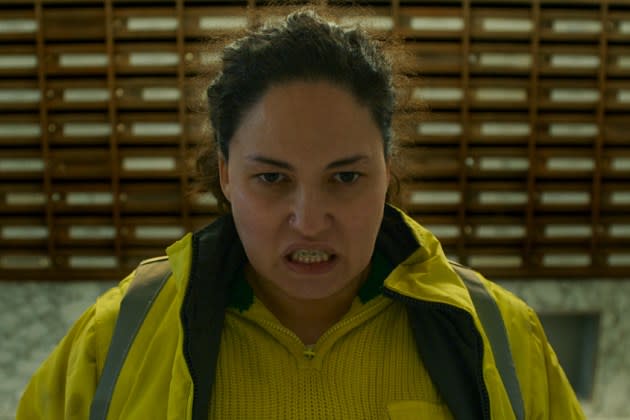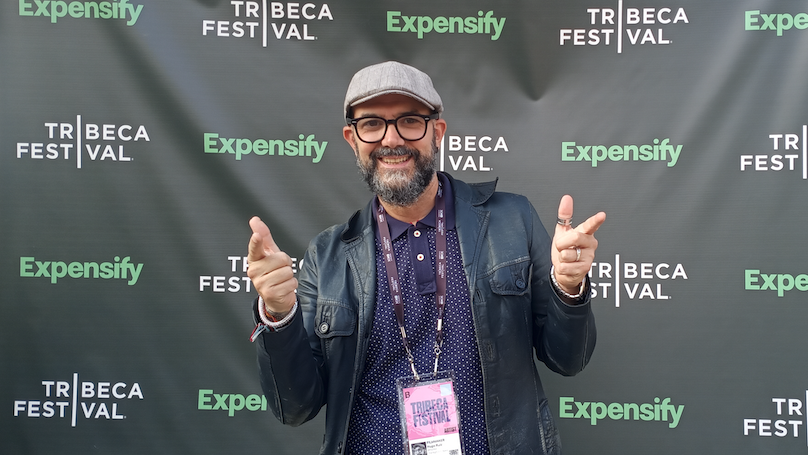Director Hugo Ruiz Unpacks Tribeca Winner ‘One Night With Adela’

Ensconsed in Tribeca’s Midnight section, Spain’s “One Night With Adela” the feature debut of Hugo Ruiz, came pretty much from nowhere to walk off with the festival’s best new narrative director award, won in the past by Michelle Garza Cervera for “Huesera.”
Produced by Spain’s Muertos de Envidia Company and FTFCam, the film follows Adela, a deeply wounded and disturbed night sweeper that is hellbent on retaliating against those who she believes have wronged her.
More from Variety
Over the course of one night, we accompany Adela, slowly putting together the pieces of who she truly is. Shot on a variety of one shot sequences that find a style and aesthetic in the bleak night universe that Adela traverses, the film is driven by Laura Galán who proves once again – after Sundance hit “Piggy” (2022) – that she has the acting strength to carry an entire film by herself. #ConUnPack will handle international sales and distribution in Spain.
Also written by Ruiz, who was inspired by “Victoria” (2015), a thriller that thrives on the concept of a one sequence film, “One Night With Adela” belongs to a trilogy currently in development whose all three films take place simultaneously, during Adela’s fateful night.
Below, Ruiz speaks to Variety about the film.
The film does an excellent job at pacing how much information it delivers to the audience and how that affects our understanding of the character. What were your guidelines when structuring the story?
That was exactly the intention. I was always aware when setting long shots of the danger of losing the audience’s interest and how to set up little details that can hold that attention. So right from the get-go you need to introduce little details that add contrast to the archetypes that the audience has already ingrained. So for example in the beginning as she starts working, she grabs her camera which from the start opens questions. She’s a night sweeper and yet she takes photos of her work. These are like little pills, quite banal at the beginning but which keep the audience interested for the later unfolding of the character.

Although the finale sparks multiple revelations, it is actually in a dance scene – where Galán gives a tremendous performance – where both form and story reach a climactic moment. Could you talk about finding that scene?
For me this dance was fundamental. It meant to set the stage for the twilight of a woman, she gives everything that she has in this dance, on the ruins of her life. It was a big struggle to get the rights for the song but to me it was essential because the lyrics are about the flight of someone, using drugs as a means of escape. And Laura gave such a performance that through that rageful dance there’s so much that is said to those who wronged her, as if she were screaming: “This is what you’ve made of me, I hold you accountable for this.” So when she finally stops, exhausted, you glimpse the end of the road, she gave everything that she had.
The one sequence shot has become now a far more accessible tool for any filmmaker, yet it always brings a new set of challenges for those who fully embrace it. What were yours?
When doing a one sequence shot you are rapidly met with not only physical limitations but some punctuation and rhythm where editing could be so useful. Yet to me once you define those borders where your language is “confined” it’s up to you to come up with new solutions. Given that the camera is your guiding narrative tool,I tried to find as many different shots as possible not only to avoid a visual monotony but also to emphasize emotion. So for example there are not that many low angle shots in the film, and precisely because of it when they appear, you feel them, and that loads them with meaning and emotion.
The film manages to be both a thriller and a slow, unfolding portrait, thus a stellar example of modern Spanish cinema which often wraps genre around a strong authorial voice. What’s your take on this?
I consider myself a filmmaker that leans far more into auteur filmmaking rather than genre. Yes, the film has thriller touches, but the film is filled with instances where – because I shoot relying more on what I feel at the moment- everything comes to a halt and the audience has to engage in a different way with the story. There’s a point where Adela leaves the frame and we stay looking at a documentary on cuckoos on the TV. Of course it has a thematic relation with Adela’s story but it asks for the audience to actively participate and that’s an essential part of my shooting style, which I guess belongs more to auteur cinema.

Best of Variety
Sign up for Variety’s Newsletter. For the latest news, follow us on Facebook, Twitter, and Instagram.

 Yahoo News
Yahoo News 
